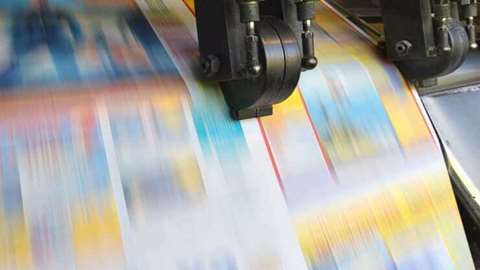Ulbe Jelluma: We live in uncertain times with political, economic, technological and climate changes. What will be the challenges and opportunities in your industry?
Markus Weiss: The print industry faces significant challenges from the need to adapt to the ever-changing needs and behaviours of the modern consumer. As more people consume information digitally, print needs to work harder and smarter to succeed. People are exposed to thousands of digital messages every day, however, the majority of these are not relevant to the individual.
Inbox overload is also making email a less relevant tool for marketers. This presents print with an opportunity to break through the noise.
Printing digitally not only enables shorter runs but printed marketing can be targeted to the specific behaviours of each individual, resulting in a greater return on investment.
UJ: The most important themes are without a doubt AI and sustainability. How does that impact your industry and what kind of opportunities does that offer?
MW: The impact of AI and the need to market sustainably are two huge factors affecting the print industry. Both represent a huge opportunity for digital print.
AI will become an ever-increasing partner for marketing departments enabling them to increase the effectiveness of every campaign. Coupled with the benefits print delivers to break through the over-crowded digital channels, digital print will become more relevant than ever before.
Research tells us that 70 per cent of printers already source sustainable materials which is a big step towards more sustainable products. More importantly, slightly more than one-fifth of them plan to commit to being Carbon Neutral within the next 5 years. Despite this figure, we will need to speed up that process.
Another challenge the print industry faces regarding sustainability is waste. Traditional print methods require long runs where waste is not only created in setup processes but also when much of what is produced is simply not used and is trashed.
Print's biggest sustainable challenge comes in the form of packaging and the growing demand for eco-friendly products. HP’s digital labels and packaging portfolio is again enabling brands to now produce shorter runs of what consumers need, when they need it, using sustainable materials, reducing waste and all using environmentally friendly processes.
As a company, HP will operate by next year for 100% on renewable energy. And we have programmes in place to reuse equipment parts and waste management of consumables.






